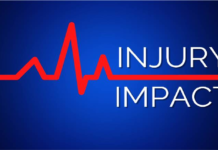On June 16, the city of Rochester, New York celebrated its tenth annual Deaf Festival, gathering at a local park to share and celebrate Deaf culture. Rochester is home to one of the largest deaf and hard-of-hearing (DHoH) populations in the United States, and June’s festivities served to honor those that helped shape this community – and those who are continuing to foster its growth.
Educational Roots
The DHoH community has roots in Rochester that date all the way back to 1876, when the Rochester School for the Deaf opened. Initially, the school taught its pupils to communicate primarily via fingerspelling and speech, a method of signing that is sometimes referred to as the “Rochester Method.”
While the Rochester School provided an initial draw for the deaf community, the city began attracting DHoH individuals in much higher numbers almost a century later. In 1965, the National Technical Institute for the Deaf (NTID) opened its doors in the city, becoming the first-ever technological college in the world for DHoH students. The school was established by Congress with the goal of promoting “the employment of persons who are deaf by providing technical and professional education.” The NTID is one of the nine colleges of the Rochester Institute of Technology and currently enrolls around one thousand students per year.
Businesses Begin to Respond and Adapt
The NTID has certainly played a significant role in drawing a large DHOH community to Rochester, with students and alumni taking up residency in the city. Notably, as Syracuse.com pointed out, all NTID associate degree students are required to complete off-campus internships, which typically result in them taking a wide variety of jobs throughout the city. This has meant that the business community in Rochester has evolved to better meet the needs of DHoH interns (and alumni employees) – and the DHoH community has played a very active role in shaping the trajectory of business development in the city.
As businesses in Rochester evolved to better accommodate DHoH employees, social services and consumer outlets also began actively taking steps to meet their needs. “Bars and restaurants — and even local television news reports — turned on captioning long before news tickers became common,” Teri Weaver of Syracuse.com wrote. “Hospitals began staffing interpreters. Hair stylists and bartenders who learned ASL attracted loyal clients. And as the major factories downsized, video relay services and other communications businesses opened. All the while, a parish for deaf people grew.”
A Sense of Liberation
The vibrant student and alumni DHoH community in Rochester, coupled with the city’s evolution to become more DHoH-friendly, drew more and more DHoH individuals to live in Rochester over time, as the city became a place where they felt they could live most fully as themselves, the New York Times reported back in 2006. Francis Kimmes, a deaf individual who moved to Rochester in 1962 after spending many years in Niagara Falls — where he was one of only a few DHoH individuals — said he felt liberated when he moved to Rochester. “I felt more free,” Kimmes said through an interpreter. “It hit me. It was powerful.”
Alexandra Ling, a former student at the Institute who decided to remain in Rochester, shared similar sentiments. “When I first moved here, I was shocked to see so many deaf people,” Ling wrote to the paper in an email in 2006. “I decided to stay here because I felt really comfortable. People at stores and restaurants understand deafness, so there’s a lot less communication barriers even though they are hearing.”
Today: Influence Across All Sectors
Presently, the DHoH community’s impact on Rochester’s development is apparent in every sector. For example, the University of Rochester’s Medical Center has a Deaf Wellness Center that offers “clinical services, teaching, and research activities that pertain to mental health, healthcare, sign language interpreting, and other topics that affect the lives of people who are deaf or hard-of-hearing.” The University also runs the Deaf Strong Hospital program, which relies on DHoH community volunteers to help train medical students in cross-cultural sensitivities and competencies, including providing care to DHoH patients.
There are also Deaf community, social, and recreational associations throughout the city. According to VeryWellHealth, some of the many examples of these organizations include multiple churches for the deaf or churches with deaf ministries, a recreation club, softball league, and golfers’ association for DHoH individuals, and regular coffee groups and networking happy hours for the DHoH community. Moreover, a variety of restaurants and cafes in Rochester employ staff who know sign language and can communicate effectively with DHoH patrons.
Furthermore, the housing industry in Rochester has also very much been shaped by the DHoH community. For example, the Rochester View apartment complex opened in 2015 with a goal of integrating “safe housing with increased communication and safety supports for persons who are Deaf, hard of hearing and those using American Sign Language (ASL),” the New York Housing Conference (NYHC) noted. The complex’s 61 units boast a host of features specifically designed to meet the needs of these communities, including pre-installed video intercoms and phones, fire alarms that use strobe lights as the alarm signal, strobe light doorbells, and specially designed rooms and hallways where layout and size are optimized for the visualization and spacing required for signing. Moreover, the complex is an affordable housing community intended to help ease the financial burden of housing for DHoH individuals, who are unfortunately more likely to be underpaid and underemployed — an issue which many DHoH individuals attribute to discrimination, NPR reported.
Moreover, several real estate brokers in Rochester also specifically advertise that they are proficient in American sign language and adept at helping members of the DHoH community find housing that meets their needs. Indeed, helping everyone navigate the home buying and selling processes – and find a home that best suits their needs – constitutes a core part of the work of real estate brokers do, and demonstrates how they can play crucial roles in helping shape neighborhoods and communities.
Notably, the National Association of Realtors® believes that it’s imperative that REALTORS® stay informed about all issues related to real estate – and that they have a “social responsibility” to help ensure the “widest distribution of landownership” and “access to affordable housing.” These responsibilities involve helping all individuals, including those who are DHoH, find homes and communities that are a good fit by presenting them with a variety of well-researched residence options that meet their needs, but also don’t steer them toward one property or community in particular. REALTORS® take this responsibility very seriously, something which is reflected in the preamble to their Code of Ethics & Standards of Practice:
As the DHoH community in Rochester continues to grow and thrive, the community of Rochester will continue to evolve along with it, ideally increasingly providing services and products that meet the needs of the DHoH and hearing communities in progressive and thoughtful ways. Various sectors, like the real estate industry, educational institutions, medical facilities, and consumer outlets, will play a key role in continuing this evolution, especially by consciously remaining informed (in policy and practice) about the best ways to help build and serve cross-cultural communities – something to which NAR and various other professional organizations are highly committed.
And, of course, the city’s DHoH community will also undoubtedly play an active role in this continued evolution, employing its skills and expertise to define Rochester’s future. If history is any indication, the city will be making waves and creating a unique and important legacy for many years to come.


















